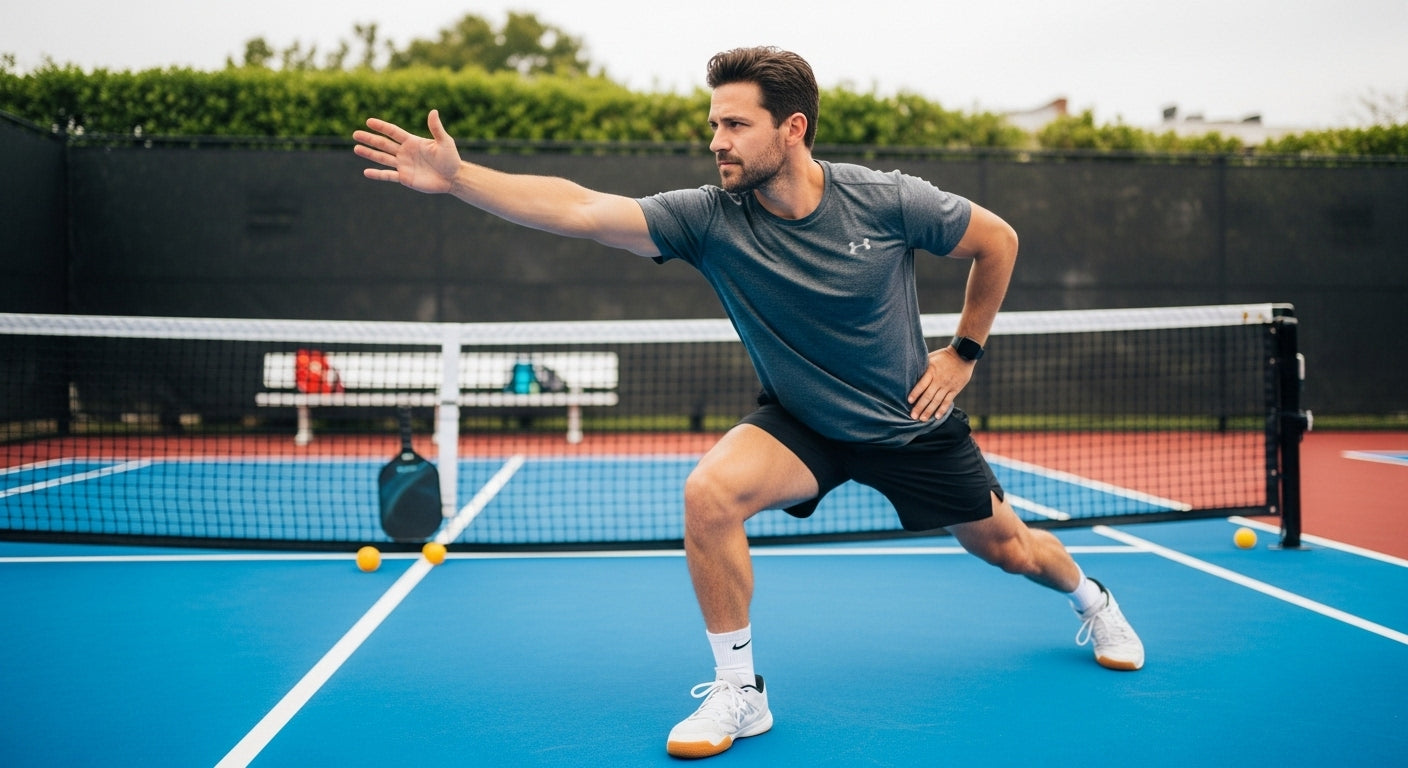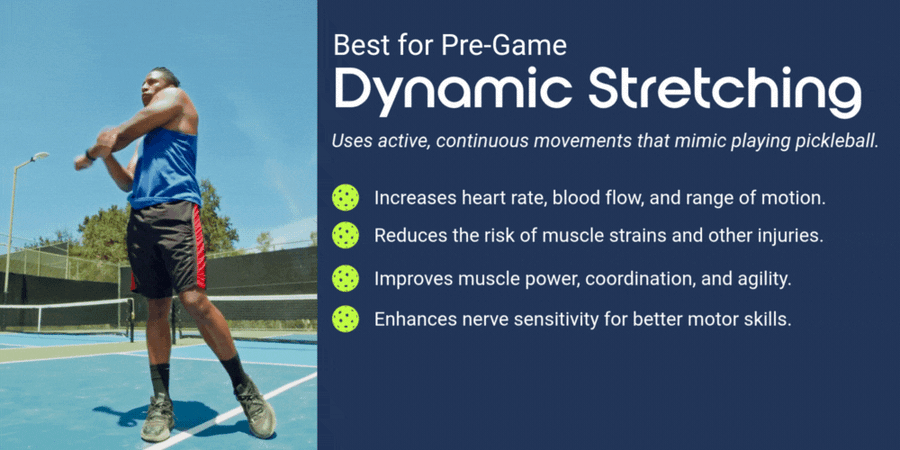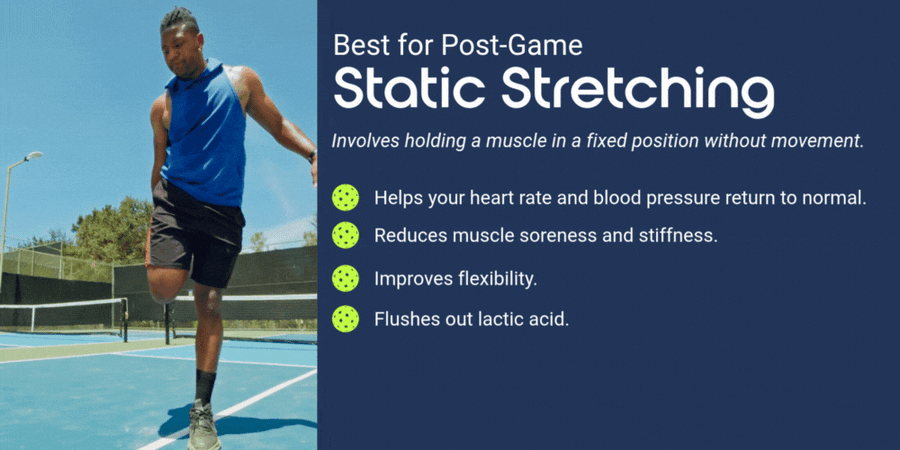
Aug 04, 2025
The Complete Guide to Pickleball Warm-Up Exercises
Why a Dynamic Warm-Up is Your Best Pre-Game Strategy

Dynamic Stretching Pre-Game
"Dynamic stretching that mimics the movements of pickleball prepares your body for the game's physical demands. It warms up your muscles and ideally improves your range of motion."
-- Dr. Cynthia Boccara, Chiropractor and Pickleball Coach

Static Stretching Post-Game
"When it comes to flexibility, dynamic stretches are not quite as effective as static stretches. However, static stretches have been shown to sometimes switch muscles off (if held for longer than 45 sec), which is not ideal if you're about to compete! This is where dynamic stretches can come to the rescue."
-- Maryke Louw, Physiotherapist at Sports Injury Physio.
The Science Behind Warming Up
Range of motion increased significantly from 7 to 10% immediately after dynamic stretching.
The increase was sustained over 90 minutes.
A Step-by-Step Routine
Essential Warm-Up Exercises for Pickleball
The Mental Warm-Up
Preparing Your Mind for the Game
"The success of visualization in improving physical performance is rooted in the brain's ability to stimulate the same neuropathways used during the actual physical execution simply through visualization."
-- Joe Puentes, Psy. D., at Performance Psychology Center
Whatever you tell yourself in your head means so much. Always think and say positive things to yourself. If you can keep your emotions in check and think positive thoughts, good things will usually happen.
-- Anna Leigh Walters, #1 Ranked Female Pickleball Player
Tailoring Your Warm-Up
Personalization & Progression
The Essential Post-Game Routine
Cool Down
Conclusion
Related Articles
If you want to go far, go together
Pickleball Strategies to Dominate The Court
Advanced Pickleball Strategies to Dominate the Court
Read More aboutAdvanced Pickleball Strategies to Dominate the Court
Explore the relationship between osteoarthritis and pickleball
Osteoarthritis and Pickleball: Can You Play?
Read More aboutOsteoarthritis and Pickleball: Can You Play?


